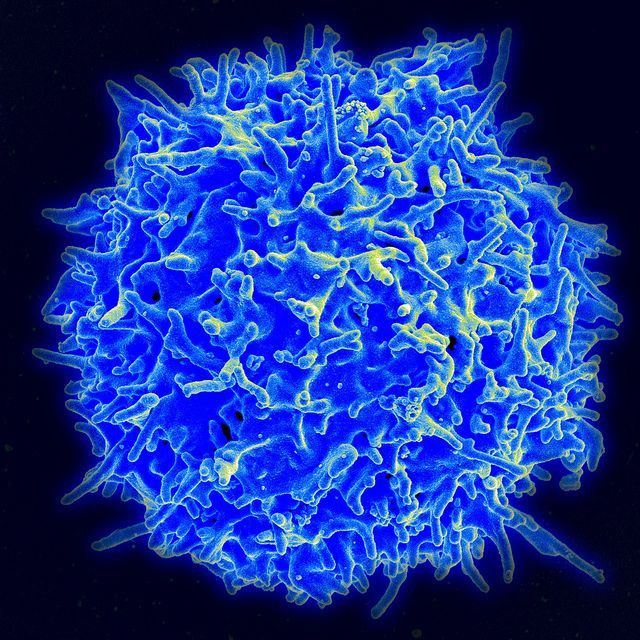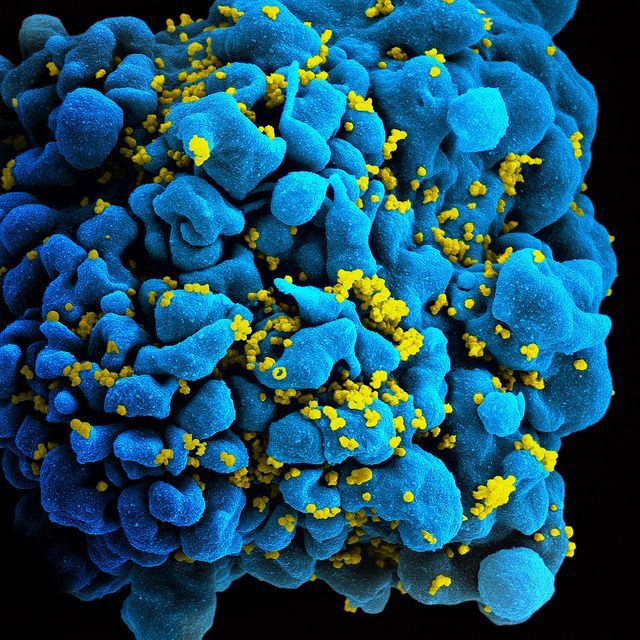How HIV Attacks The Body And Progresses To AIDS

As viruses go, HIV ranks among the most wily. In fact, it is a retrovirus, meaning it is composed not of DNA but of RNA. Like other retroviruses, HIV has the capacity to enter a cell and then use the machinery of its host to replicate itself. It does this by transcribing its RNA into the DNA of the host cell. After this occurs, the cell will translate and transcribe viral genes along with its own. Once a cell is infected, then, it is transformed into the perfect factory for producing copies of the virus.
Another reason HIV is highly dangerous is it attacks the immune system, the body’s defense system that detects and destroys intruding bacteria and viruses. In particular, HIV goes after T cells. A type of white blood cell, T cells always work in teams of two. Scientists divide them into two categories based on their function (and the molecules found on their surfaces). CD4 cells, referred to as helper T cells, lead the fight against infections by signaling for help, and CD8 cells swoop in for the kill.

However, HIV penetrates CD4 cells before they can sound the alarm. Carried through the blood stream, the virus injects its own genes into these helper cells which begin to replicate the virus. With the helper cells unable to perform their crucial function, other immune system cells begin to fail in their duties. And so begins the methodical destruction of the immune system.

Stages of Infection
Typically, doctors divide HIV infection into stages: acute primary infection, clinical latent infection, symptomatic HIV infection, and progression from HIV to AIDS. The most important thing to remember is this: HIV can be managed as a chronic disease. Advances in medication means life expectancy has grown and people living with HIV may enjoy healthy lives.
Acute Primary Infection
Within the first few weeks of contracting HIV, seven out of 10 people will experience symptoms described often as “the worst flu ever” — muscle aches, fever, headache, stomach pain. During the acute primary infection phase, some HIV-infected cells have begun to circulate through the blood system. However, the immune system has not been damaged badly yet, so it responds by producing HIV antibodies and with the help of all the uninfected T-cells, it mounts an attack two to four weeks after infection. At this time, HIV levels in the blood will be greatly reduced.
Clinical Latent Infection
During this phase, patients infected with HIV usually live asymptomatic lives because the infection has not yet caused any additional symptoms. Covertly, though, HIV is infiltrating the body and attacking its defense system. While levels of the virus in the blood may be low, nearly undetectable in some cases, HIV has become extremely active in the body’s lymph system. Untreated, this second stage of an HIV infection has an average duration of 10 years. However, patients who take antiretroviral therapy (ART) may live with clinical latency for several decades.
Symptomatic HIV Infection
Over time, the infection advances. When the body’s viral load — a measurement of how many cells in the blood are infected with HIV — begins rising to higher and higher levels, this indicates the immune system is deteriorating. As the disease progresses, new symptoms begin to appear and quickly worsen. Typically, they include rapid weight loss, memory loss, recurring fever, and diarrhea lasting more than a week. In this phase, opportunistic infections, which would not harm a healthy person, become likely and make an HIV patient sick. Such infections are called opportunistic because they take advantage of a weakened immune system.
Progression from HIV to AIDS
In the final stage of HIV, a patient’s T-cell count falls as viral load increases — the immune system becomes severely compromised. When the patient is diagnosed with a stage-4 HIV-related condition such as tuberculosis or cancer or pneumonia, the virus has made its progression to AIDS, Acquired Immunodeficiency Syndrome. Many of the symptoms and sickness at this point may be from opportunistic infections and not from AIDS itself. Once the virus has progressed to AIDS, the body is more likely to fail, though the time left to a patient ranges anywhere from just a few months to many years.
To learn more about what happens when HIV becomes AIDS, watch the video below, courtesy of YouTube:



























